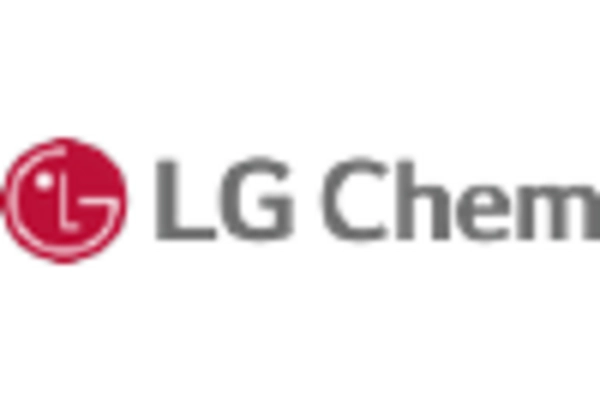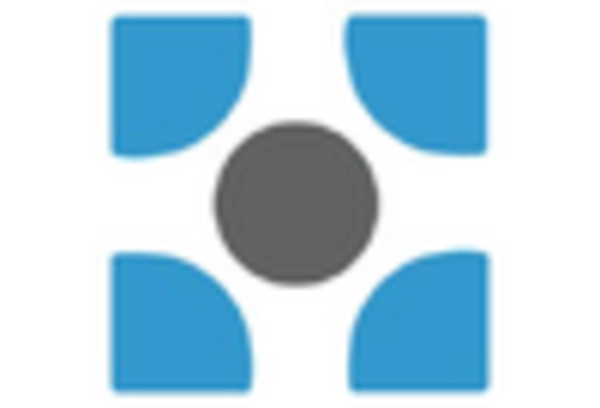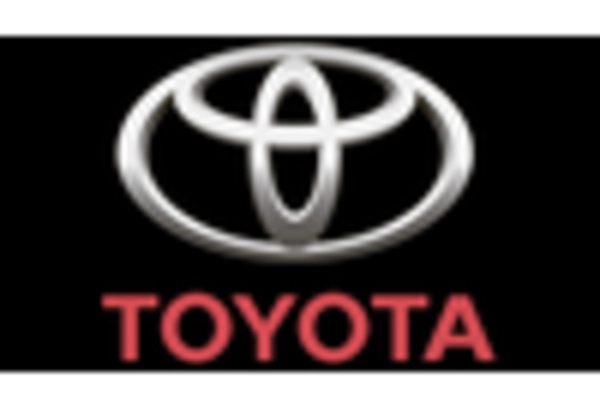Rising Demand for Consumer Electronics
The rising demand for consumer electronics is another key driver for the Solid Ion Conductor Market. As technology advances, consumers increasingly seek devices that offer longer battery life and faster charging capabilities. Solid ion conductors are essential in the development of next-generation batteries that meet these consumer expectations. The consumer electronics market is expected to reach USD 1 trillion by 2026, with a significant portion of this growth attributed to portable devices such as smartphones and laptops. This trend suggests a growing need for solid ion conductors, as manufacturers aim to enhance battery performance and efficiency. Consequently, the Solid Ion Conductor Market stands to gain from the increasing integration of advanced battery technologies in consumer electronics.
Increasing Adoption of Electric Vehicles
The rising adoption of electric vehicles (EVs) is a pivotal driver for the Solid Ion Conductor Market. As governments and consumers alike prioritize sustainability, the demand for efficient energy storage solutions has surged. Solid ion conductors are integral to the development of solid-state batteries, which offer higher energy densities and improved safety compared to traditional lithium-ion batteries. According to recent estimates, the EV market is projected to grow at a compound annual growth rate (CAGR) of over 20% through the next decade. This growth is likely to propel the demand for solid ion conductors, as manufacturers seek to enhance battery performance and longevity. Consequently, the Solid Ion Conductor Market is positioned to benefit significantly from this trend, as innovations in solid-state technology continue to evolve.
Growing Focus on Renewable Energy Sources
The increasing focus on renewable energy sources is a significant driver for the Solid Ion Conductor Market. As nations strive to reduce carbon emissions and transition to cleaner energy, the need for efficient energy storage systems becomes paramount. Solid ion conductors play a crucial role in the development of advanced energy storage technologies, such as solid-state batteries, which are essential for integrating renewable energy sources like solar and wind into the grid. The energy storage market is projected to grow substantially, with estimates suggesting a value of USD 200 billion by 2025. This growth is likely to create substantial opportunities for the Solid Ion Conductor Market, as the demand for reliable and efficient energy storage solutions continues to escalate.
Supportive Government Policies and Regulations
Supportive government policies and regulations are increasingly shaping the landscape of the Solid Ion Conductor Market. Many governments are implementing initiatives aimed at promoting clean energy technologies and reducing reliance on fossil fuels. These policies often include incentives for research and development in battery technologies, including solid-state solutions that utilize solid ion conductors. For instance, various countries have set ambitious targets for electric vehicle adoption and renewable energy integration, which are likely to drive demand for advanced energy storage solutions. As a result, the Solid Ion Conductor Market is expected to benefit from these favorable regulatory environments, fostering innovation and investment in solid ion conductor technologies.
Technological Advancements in Battery Technology
Technological advancements in battery technology are significantly influencing the Solid Ion Conductor Market. Innovations in solid-state batteries, which utilize solid ion conductors, are being developed to address the limitations of conventional batteries. These advancements include improvements in ionic conductivity, thermal stability, and overall battery efficiency. The market for solid-state batteries is anticipated to reach USD 10 billion by 2027, reflecting a robust growth trajectory. As manufacturers invest in research and development to enhance battery performance, the demand for solid ion conductors is expected to rise correspondingly. This trend indicates a promising future for the Solid Ion Conductor Market, as it aligns with the broader shift towards more efficient and sustainable energy storage solutions.


















Leave a Comment